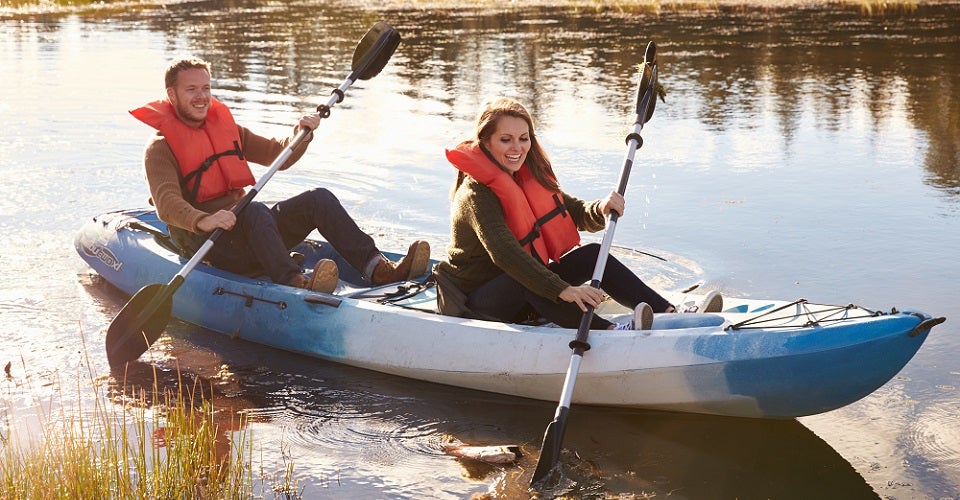
Our Editors independently research, test, and rate what we feel are the best products. We use affiliate links and may receive a small commission on purchases.
Getting started kayaking can be a tricky proposal. These boats seem to have narrow frames and are known for being a touch “squirrelly,” and using a double bladed paddle can be less than intuitive when first starting out. However, it won’t take long before you realize how advantageous these nimble little watercraft can be. Kayaks are popular for many reasons and finding a beginner kayak doesn’t need to be a difficult process. The best beginner kayaks have the stability and adjustability to help just about anyone get started out on the right foot. And while learning to kayak may seem hard enough, there’s no reason to add to the stress when it comes to picking the right one for you. Let’s run through the best beginner kayaks for the novice paddler, and what you need to know to help you pick the right one for your needs.
Best Beginner Kayaks
| Perception Flash Sit Inside Kayak | Sea Eagle SE370 Inflatable Sport Kayak Pro Package | Vanhunks Voyager Deluxe Tandem Kayak | |
|---|---|---|---|
| Weight Capacity: | 325 Pounds | 650 Pounds | 500 Pounds |
| Length: | 9.5 feet | 12.5 feet | 13.5 feet |
| Special Feature: | Comfortable padded seat | Seating for 3 people, includes carry bag, inflation pump & repair kit | Rear secure storage compartment |
| Storage Capability: | Rear dry storage compartment, cupholder | None | Front storage with bungee cords |
| Amazon | Amazon | Amazon |
For more of our kayak gear recommendations, have a look through these popular Outside Pursuits guide links: Kayak Paddles, Kayak Carts, Kayak Seats.
Quick Answer: The 7 Best Rated Kayaks For Beginners
- Perception Flash Sit Inside Kayak
- Sea Eagle SE370 Inflatable Sport Kayak Pro Package
- Vanhunks Voyager Deluxe Tandem Kayak
- Pelican Sentinel 100X Sit-on-Top Kayak
- Ocean Kayak 12-Feet Malibu Tandem Beginner Kayak
- Advanced Elements AdvancedFrame Inflatable Kayak
- Old Town Canoes & Kayaks Heron Junior Kayak
Our reviews of the top beginner kayaks with our comparison table and buyers guide will help you choose the right one. Be safe, always wear a life jacket.
Beginner Kayak Reviews
#1 Perception Flash Sit Inside Kayak Best Sit-In Beginner Kayak
- Weight Capacity: 325 Pounds
- Length: 9.5 feet
- Special Feature: Comfortable padded seat
- Storage Capability: Rear dry storage compartment, cupholder
This sit inside kayak by Perception Kayaks was designed with beginner paddlers in mind. At 9.5 feet in length, it’s a good size for all around paddling. It is actually long enough to track well but not too long that it’s hard to maneuver. I like compartment right in rear for dry storage along with some additional storage in the front. A nice touch is a built in drink holder so you can keep a beverage handy at all times. If you like to document your paddles, there are a few molded rod holders if you want to try some fishing. Another handy feature is the paddle keeper molded onto each side of the kayak, great when you want to take a break from paddling and not having to worry about your paddles falling overboard!
The “CSS” or Comfort Seating System might be the best part of this kayak. They really made an effort to include a comfortable seat that is easily adjustable. Complete with bow and stern handles and molded foot rests this may be the best beginner kayak on our list.
Best For: The beginner paddler who wants the most comfortable kayak on the market.
#2 Sea Eagle SE370 Inflatable Sport Kayak Pro Package Best Inflatable Beginner Kayak
- Weight Capacity: 650 Pounds
- Length: 12.5 feet
- Special Feature: Seating for 3 people, includes carry bag, inflation pump & repair kit
- Storage Capability: None
The Sea Eagle is our first inflatable kayak on the list. Being an inflatable, it isn’t rigid in construction, but it actually holds it shape quite well. It has seating capacity for up to 3 people, or maybe just you and the dog. Don’t worry about him puncturing the kayak. It’s an extremely tough Polykrylar hull that is almost impossible to puncture. I say almost, but it can happen, so be aware of that.
The Sea Eagle has front and rear storage if you want to take it on a camping trip or use if for fishing. It’s rated for up to Class III whitewater rafting as well. Weighing only 32 pounds and deflating to fit into the included duffel bag of only 31” x 19” by 8” high, it will easily fit into a closet for storage.
Best For: Paddling for up to three people and/or cargo in a lightweight package.
#3 Vanhunks Voyager Deluxe Tandem Kayak Best Beginner Kayak
- Weight Capacity: 500 Pounds
- Length: 13.5 feet
- Special Feature: Rear secure storage compartment
- Storage Capability: Front storage with bungee cords
Vanhunks makes an awesome beginner sit inside kayak that we couldn’t leave off our list. While not being as well know as some other like Ocean, don’t pass this one by At 12 feet long and just over 32 inches wide it’s a reasonable sized kayak. Not long enough to be hard to learn on on, but not so short that it would be “squirrelly.” Tandem kayaks are great beginner’s tools, in that you can have a more experienced kayaker take you out, or two of you can share the work, getting the hang of things at the same time. Plus, it’s bigger and more adjustable, so that helps with stability, too.
There are tons of features packed into this starter tandem kayak. I really like the addition of 2 swivel mount rod holders and they included two aluminum paddles. It’s ready to hit the water the moment it shows up at your door. The hull is molded and designed to provide stability. They achieve this by including a multi-chine hull design which provides stability at low and high speeds. There are several molded foot rests, dry bulkhead storage, and deck lashing. These provide tons of room for storing gear no matter what activity you’re going out for. Wilderness Systems also gets big points of making the integrated adjustable seat one of the most generous on our list.
Overall this is arguably the most feature rich beginner kayak on our list. Best for the upgrade option.
#4 Pelican Sentinel 100X Sit-on-Top Kayak Best Sit-On-Top Beginner Kayak
- Weight Capacity: 275-300 pounds
- Length: 9.5 feet
- Special Feature: Three Layer Polyethylene
- Storage Capability: Large rear storage well and front deck bungee cords
One often overlooked feature on kayaks is the quality of the seat. Pelican took care of this on the Sentinel by including an amply padded molded foam seat. I love the wide shoulders of the seat back which wrap around to fully support the paddler. There’s nothing worse than a back ache from a day of kayaking.
On the deck there’s tons of shock cord lashing. These elastic bungee cords can be used to lash down coolers, jackets, fishing gear, or anything else for a day of paddling. There’s also some extra storage room in the dry well behind the cockpit. Put your phone in a ziplock before storing in the hatch though, because it may not be perfectly waterproof. I also like that there is anti-slip carpet in the front for your fury friend to sit on plus a cup holder in this recreational boat. There’s enough room to relax and move your legs a bit so you don’t feel cramped on a lazy day of paddling the lake with family or friends.
Its a tough call, but this is certainly a top contender as the best kayak for beginners
Best For: An all-around quality boat from a great manufacturer.
#5 Ocean Kayak Two Malibu Tandem Kayak Easiest Paddling Beginner Kayak
- Weight Capacity: 425 pounds
- Length: 12 feet
- Special Feature: Seats up to 3 people, molded footrests
- Storage Capability: Individual dry storage compartments
The Malibu is a sit on top style kayak. That means it has tons of leg room, wiggle room, and space to easily get in and out of the boat. Ocean Kayak is the brand name of this boat, not to be confused with an ocean faring kayak. You can use this boat anywhere. What really sets it apart is how easy it is to paddle.
There are two adjustable molded foam seats front and back but there’s a third hidden seat. In the center is space for a child seat which is molded into the plastic of the boat itself. While it might not be as comfy as a foam seat, it’s always there and doesn’t take up space so you can easily adjust to having a child along with you. With up to three people and extra gear along for the lunch picnic, you’ll have to be careful not to overload the boat. There’s a maximum total weight capacity of 425 pounds. With two people and gear that’s not a lot of wiggle room, so be sure to plan ahead if you need an extra boat.
Best For: Tandem paddling with the occasional child passenger.
#6 Advanced Elements AdvancedFrame Inflatable Kayak Most Adaptable Beginner Kayak
- Weight Capacity: 550 Pounds
- Length: 12 feet
- Special Feature: Folds down to 35″x21″x12″
- Storage Capability: Large rear storage compartment, front area with bungee cords
If you don’t have room for a standard hardshell kayak or not sure if you will be able to transport one, we have the answer: an inflatable kayak. The Advanced Elements kayak is a great option, too. It’s very versatile. Want to go kayaking with a partner? The Advanced Elements can do that. Feel like going solo? It can do that – no problem.
The kayak uses an open cockpit design of a sit on top kayak so it’s easy to get into and out of., but you can slightly enclose things, too. When you think of an inflatable kayak you may be thinking a flimsy, mushy kayak. Not so here. It uses built-in aluminum ribs to keep the kayak’s shape along with a 3-layer PVC outer shell for puncture resistance. The floor uses something called “drop stitch” technology that makes the floor almost a rigid a hard shell. This makes It possible to stand up if need be, plus it helps keep its shape for easier paddling. Advanced Elements has put deck rigging in the bow and stern of the kayak to store gear along with some comfortable padded seats for all day paddling.
Note: You will need a pump, here is a link to the Advanced Elements Pump, I would recommend an electric inflatable pump, you can see my reviews here.
Best For: Paddlers who want the ultimate in flexibility in a lightweight, portable package.
#7 Old Town Canoes & Kayaks Heron Junior Kayak Best Kid’s Beginner Kayak
- Weight Capacity: 125 Pounds
- Length: 7.5 feet
- Tag Along Tow System for towing your child
- Perfect kayak for kids!
Once the kids get too big to fit in the middle seat of your tandem kayak, it might be time to upgrade. Besides, it’s nice to let them tire themselves out in their own boat. Old Town Kayaks, a widely recognized name in recreational boats, made this kayak just for the kids. It had an integrated tag along system which is made specifically to help you tow the kids along if they do get too tired. Trust me, it’s way better than being stuck on the river with a crying child that refuses to paddle. There’s also an integrated molded foam seat that’s made for kids. It’s not adjustable, but that’s both good and bad.
While it would be nice to adjust the seat as your child grows, having less straps and things to go wrong is always a positive when it comes to getting children into new sports. Once the kids get above 100 – 115 pounds it’s time for them to move to an adult kayak. Fortunately the kayak itself is lightweight enough that most kids can carry it themselves, at just 26 pounds total. The Heron is probably the best kids kayak available.
Best For: Getting kids out of the house and on the water!
Best Beginner Kayaks Comparison Table
| Best Beginner Kayaks | Weight Capacity | Length | Special Feature | Storage Capability | |
|---|---|---|---|---|---|
| Perception Flash Sit Inside Kayak | 325 Pounds | 9.5 feet | Comfortable padded seat | Rear dry storage compartment, cupholder | |
| Sea Eagle SE370 Inflatable Sport Kayak Pro Package | 650 Pounds | 12.5 feet | Seating for 3 people, includes carry bag, inflation pump & repair kit | None | |
| Vanhunks Voyager Deluxe Tandem Kayak | 500 Pounds | 13.5 feet | Rear secure storage compartment | Front storage with bungee cords | |
| Pelican Sentinel 100X Sit-on-Top Kayak | 275-300 pounds | 9.5 feet | Three Layer Polyethylene | Large rear storage well and front deck bungee cords | |
| Ocean Kayak Two Malibu Tandem Kayak | 425 pounds | 12 feet | Seats up to 3 people, molded footrests | Individual dry storage compartments | |
| Advanced Elements AdvancedFrame Inflatable Kayak | 550 Pounds | 12 feet | Folds down to 35″x21″x12″ | Large rear storage compartment, front area with bungee cords | |
| Old Town Canoes & Kayaks Heron Junior Kayak | 125 Pounds | 7.5 feet | Tag Along Tow System for towing your child | Perfect kayak for kids! |
How to Choose the Best Beginner Kayak for You
- Types of Beginner Kayaks
- Sit on Top vs Sit Inside Kayaks
- Kayak Materials
- Kayak Length
- Width and Depth
- Kayak Features
- FAQs For Beginner Kayaks
- Best Beginner Kayak Brands
- Conclusion
Some parts of picking out your new kayak might be obvious but others are not so much. Here’s a few things to keep an eye on when you pick out your new boat! By the end of this guide you’ll know what to look for when buying your new kayak.
Types of Beginner Kayaks
Kayaks come in many varieties and buying the first boat you can find may not be the best move. It all starts by thinking about what type of kayaking sounds the most fun to you. Are you interested in paddling fast waters down narrow canyons in giant whitewater? Or do you prefer to head out fishing alone on a lazy evening in the small lake out back?
Maybe you and a partner love to paddle together and want a kayak that can store enough gear for a camping trip? No matter what the situation is, there’s a kayak out there for you. However, the best whitewater kayaks won’t make great fishing boats. Of course, the inverse is also true.
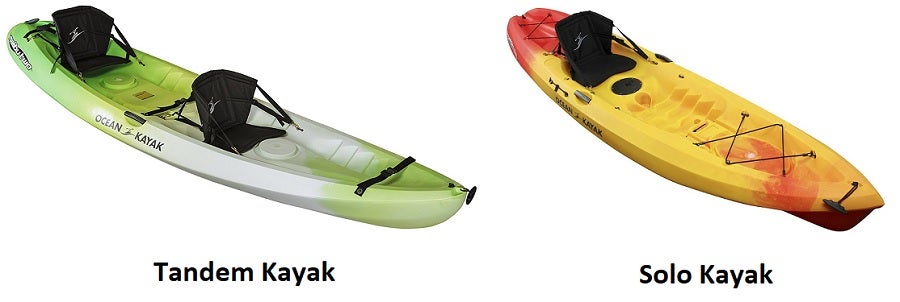
So, what’ll it be then?
- Fishing Kayaks – Are made specifically for anglers. These usually have some extra space for gear and enough room to get comfortable. You’ll also want fishing specific items like rod holders and maybe even an anchor.
- Whitewater Kayaks – Are made for the unique challenges of paddling rough, fast water. If you live in an area with good whitewater paddling and you plan to partake in this sport then a dedicated whitewater kayak is your best option! Do not try to use a recreational kayak for whitewater – it won’t end well.
- Recreational Kayaks – Are probably the most common type of beginner boat. They’re usually made to paddle gentle rivers, flat lakes, and other less demanding situations.
These boats are comfortable and easy to use, they’re also generally quite affordable. They don’t have a specific job but instead they’re made to do a little of everything.
- Touring Kayaks – Are generally purpose-built boats that perform well in open waters on long journeys. They’re usually made for speed, efficiency, and long trips. These boats often have room for camping gear and they’re made to take on the rigors of paddling unique situations such as sea kayaking.
- Tandem Kayaks are boats made to handle two paddlers. These can come in just about any flavor so long as the boat has room for two people. This usually means two separate cockpits unless it’s a sit on top kayak.
- Folding and Inflatable Kayaks are alternative choices that can be great options for some. These inflatable kayaks can literally be folded down or blown up to fit into backpacks, cars, and easy carrying spaces.
They’re still usually pretty heavy, but at least they’ll fit in the back of an SUV instead of needing a roof rack!
Sit on Top vs Sit Inside Kayaks

Sit-On-Top Kayaks – Are a relatively newly popular trend in the boating industry. They offer many advantages such as simplicity, durability, ease of use, and self-bailing. Because you sit on top of the kayak there’s tons of wiggle room and space for gear, beer, or goodies. These make excellent fishing kayaks and recreational kayaks!
Pros:
- A sit on top kayak is more beginner friendly, they are easier to get into and out of. If you are at all claustrophobic, then the enclosed feeling of a sit in kayak may make you uncomfortable.
- A sit in kayak will be self-bailing because they have what are called “scupper holes”. These are holes that allow water splashed into the kayak to drain out.
Cons:
- This type of kayak is best for warm weather/water conditions.
- You are much more likely to get wet from waves splashing and water dripping off the paddles.
Sit-Inside Kayaks – Like a sit on top kayak, sit inside kayaks have a seat and foot pedals/pegs so you can get comfortable paddling. However, instead of being on top of the kayak you are in an enclosed cockpit. With this type of kayak you have some protection from the elements and you can attach what is called a “spray skirt” giving you even more protection from the wind and water.
Pros:
- A sit in kayak will shelter the lower part of your body from the wind making it a warmer paddling experience.
- You will have a lower profile, making it slightly easier to paddle because there is less wind resistance. It also gives you a lower center of gravity making it more stable than a sit on top kayak.
Cons:
- A sit in kayak is more difficult to get in and out, so if you are less flexible, this may not be the best type of kayak for you.
- They are not self-bailing, if water splashes in the kayak you will need to flip it over to drain it.
Which is Better: Sit-in-Kayak or Sit-on-Kayak?
So first let me say one is not better than the other, it really just depends on what YOU like better. Personally I prefer sit on top kayaks but that is ME. Here are some question to help you decide:
- Where Will You Be Kayaking? Will it be primarily on calm/sheltered water or in the ocean? Keep in mind a sit-in-kayak will protect you from the elements much better and you have the ability attach a spray skirt giving you even more protection.
- Are Worried About Tipping The Kayak Over? A sit in kayak is stable because you are sitting lower in the kayak and have a lower center of gravity providing more stability. Just keep in mind it is hard to get back in AND it is possible to submerge a sit-in-kayak.
- What Weather Will Be Using It In? If you will be using the kayak in cold water/weather conditions, a sit in kayak may be best for you because they protect you more. If its primarily a warm weather only sport, then a sit-on-top might be the better option.
Kayak Materials
You can find kayaks made from all sorts of different materials but there are a few common types. For beginner kayaks these are mostly two different kinds of plastics. Of course advanced (and expensive) kayaks made from wood or composite fiber can be found, too.
Polyethylene – Is the material of choice for inexpensive beginner kayaks. Polyethylene is durable, abrasion resistant, and can stand up to tons of wear and tear. These kayaks are by far the most common and the type you’ll probably find at most retail sporting goods stores. However, they can be fragile when punctured, such as running into a sharp rock. They’re also the heaviest option and are susceptible to UV damage from prolonged storage in the sun so keep them in the shade.
ABS (Acrylonitrile-Butadiene-Styrene) – ABS plastic is the second most common construction material for kayaks. It’s a little lighter in weight and offers some mechanical superiority when compared with poly boats. ABS is naturally a bit more resistant to UV light than polyethylene but you’ll still want to store them in the shade for longevity.
Kayak Length
Kayaks come in all sorts of lengths. For beginners, usually any budget priced boat will be sized fine for recreational use. If you’re going with a more purposeful use for your kayak, such as whitewater or sea touring you’ll definitely want to pay attention to the length of your boat. Since boat length is a very specific topic depending on what kind of kayaking you want to do, we’ll leave the full discussion of that topic for another article.
However, what you should know is that short boats are more agile. Longer boats don’t turn as fast, but they track straighter in the water and usually can be paddled at higher speeds more efficiently than shorter boats of the same type. Keep in mind that kayaks can range from 7 feet to 14+ feet in length. If your vehicle or storage space is small, you may want to carefully consider whether the boat you’re choosing will fit your needs.
Width and Depth
You may or may not find beginner kayaks that are available in the width and depth that you want. Of course with very high end or custom made kayaks, you can choose these characteristics with great precision. However, beginner kayaks do have some variance when it comes to how wide and deep they are.
Wider kayaks offer more rotational stability. They’re great for getting in and out of the boat or if you’re worried about tipping. These boats will help you stay stable and upright more like a canoe. The downside is that the wider hull creates more drag and friction, thereby slowing you down with each paddle stroke and adding extra work to your trip.
Deep kayaks have a lot of room inside the cockpit. These boats have a deck that extends well above water line and they sit high in the water. They’re ideal if you want more legroom or space to stretch your knees a bit while paddling. The downside is that the higher the hull profile, the more easily your boat can catch wind.
You might not be able to buy a custom kayak, but you can compare beginner kayaks side by side to see which one has the features you want!
Kayak Hulls & Stability
If you are you the kind of kayaker who hates it when a kayak or canoe starts rolling a bit under you? The stability of a kayak will play a major role in how comfortable you feel on the water. Fortunately, sit on top kayaks are some of the most stable forms of beginner kayaks you can find!
- Flat hull kayaks are the most popular among SOT kayaks. These boats have amazing stability when flat on the water. If you tTip them up on edge, however, and they may flip over!
- Pontoon hull boats are a step up and more stable than flat hulls and they’re ideal for kayak anglers. This is another popular hull shape for sit on top kayaks.
- Rounded and V hulls are more much more maneuverable and are faster than flat and pontoon hull kayaks. However, they’re a little more unstable when getting in and out or trying to sit still.
The type of hull you choose in your kayak can really impact how it performs. Take the time to think about how you will use your kayak and you’ll have a boat that matches your needs.If you choose the wrong hull shape and you may struggle to keep your kayak from tipping over!
Kayak Features
- Spray Skirt – Having a spray skirt is common among whitewater and touring boats. The skirt prevents waves and water from entering the cockpit and keeping you protected and warm.
- Rocker – One of many design considerations to consider in a kayak. The amount of rocker tells you the amount of arc shape that the front of the kayak has.
- Skeg – A skeg is a detachable or retractable fin that when in the water stabilizes the kayak and helps you keep the kayak in a straight line.
- Rudder – Similar to a skeg, a rudder is used to control the direction of the kayak.
FAQs About Beginner Kayaks
Q: Do you prefer sit on top or sit inside kayaks?
A: Personally? Well… I think it really depends on what I’m doing.
Sit on top kayaks are awesome for getting in and out easily. They also rock as fishing kayaks thanks to the extra arm and leg room plus several key fishing accessory possibilities. However, if I’m going to on a longer trip I probably want to have a traditional “sit inside” type kayak. They tend to be a little more efficient over longer distances. You can find a lot more refined types of traditional kayaks such as sea kayaks, racing kayaks, and whitewater kayaks. Unless you need a specific type of kayak it’s probably best to just go with a sit on top model. They’re easier to use and more versatile for general recreational use, especially if you’re only going out once in a while.
Q: Are the paddles that come with my kayak any good?
A: This really depends on how much you spend on your kayak I think. Manufacturers usually try to save pennies, and who can blame them? Unfortunately, that means that cheaper kayaks (if they come with paddles) tend to come with awful quality paddles. That’s not to say they’re garbage and need to be thrown out. No, in fact, if you’re only occasionally using the kayak for recreational weekend floats with friends that entry-level paddle may be all you’ll ever need. For long trips covering many miles, such as a paddle-camping trip, you may want to upgrade. The more time you spend in the kayak and the more distance you need to cover, the more important it is to upgrade. But, what makes a paddle good? I look for lightweight first and foremost. Carbon fiber or composite paddles are amazing. Look for ergonomic hand grips and consider wearing paddling gloves if covering dozens of miles a day.
Q: Am I required to wear a life jacket?
A: First off, just to clear things up, they’re often called personal floatation devices or PFDs. Because “they’re not guaranteed to save your life”. To find out for sure whether or not you’re required to have a PFD you need to check your state laws. Depending on where you live the laws may be different and can vary from “required to wear” to “required to have onboard”. Of course, the smart thing to do (and we recommend) is to always be wearing a PFD. High-back PFDs are ideal because they get out of the way of the seat. This helps with posture and sweat. Look for mesh-backed PFDs like this one.
Q: What’s the best way to transport my kayak?
A: This one really depends a lot on your situation.
If you don’t have a roof rack on your car you can get one installed by a car accessories shop. Or, you can use a side carrier for your car or SUV. If you’ve got a hitch you might be able to use a kayak trailer as well. For those of you with a truck you can probably just toss the kayak into the bed of the truck. If you’ve got more than one or they won’t fit, consider a trailer or a bed-rack. If you’ve got a small car you can use the easy foam block and strap method of carrying a kayak on top.
Q: What are those little black screw-in storage holes for?
A: Almost every kayak has some type of storage. The first kayak I ever got just had a simple stern storage bin with a shock-cord lid. It wasn’t very secure and certainly wasn’t waterproof. However, most mid-rang or high-end kayaks come with some kind of built-in waterproof storage. These usually look like little 6” circular black plugs in the deck of the boat somewhere. They can be on top of the deck, between your feet, or behind you. It all depends on the boat. These are waterproof storage hatches and you need to learn to love them. Not only are they waterproof, but if your boat flips they keep things from falling out and sinking (like your phone). So I always store high priority items and electronics in them. At the very least, make sure your keys, wallet, and phone get in there before you get on the water!
Q: What is the best type of kayak for a beginner?
A: In general the best beginner kayak type is a sit on top kayak. They are much easier to get into and get out of. They are stable and easy to paddle. If you want to use if for fishing, a sit on top is an ideal choice.
Q: Are sit on top kayaks more stable?
A: No, a sit inside kayak is going to be more stable because you are sitting lower in the kayak and as a result has a lower center of gravity than a comparable sit on top kayak.
Q: What length kayak do I need?
A: This depends on several factors. How much storage so you need? Longer kayaks of course give you more storage options. Shorter kayaks are easier to maneuver but hard to keep in a strait line. Generally a 10ft kayak is long enough for most paddlers.
Q: How much does a decent kayak cost?
A: A good quality kayak for a solo paddler should cost under $600. More expensive kayaks will be made with lighter and more durable materials. They also typically come with better seats and more features like sealed storage.
Q: Do kayaks tip easily?
A: Beginner and recreational kayaks are designed to be very stable. While a kayak may seem easy to tip over they are not. The flat bottom on most beginner kayaks makes them very stable and difficult to flip.
Conclusion
Overall the kayak buying experience doesn’t have to be difficult. There are many details to learn as you begin your kayaking hobby but beginner kayaks aren’t particularly complicated. Of course, if you want more information it’s always a great idea to head to your local outfitter. Learn about particular kayak models and see what type of kayak works the best for you. Then you can come back to your list of beginner kayaks and find the one that fits your budget. One last thing before we wrap up. Once you have your kayak you will probably need to transport it. Here are my recommendations for kayak trailers, roof racks and kayak carts to transport it to the water.
How We Researched
To come up with the top beginner kayaks we researched a variety of sources for reviews such as REI, Dicks Sporting Goods, Cabelas and Backcountry along with our own personal experience. With so much quality gear available, we had to narrow it down based on what we felt were the best options for the price. The author, Casey Fiedler has been an avid kayaker and leads kayak camping trips during the summer months in his native state of Michigan. To help narrow down the selection he used his personal experience along with recommendations from kayak tour guides and rental shops. After extensive research, we came up with our list to help you choose the right one for you.
Recent Updates
05/24/2022 – We updated the copy and made sure the items were in stock.

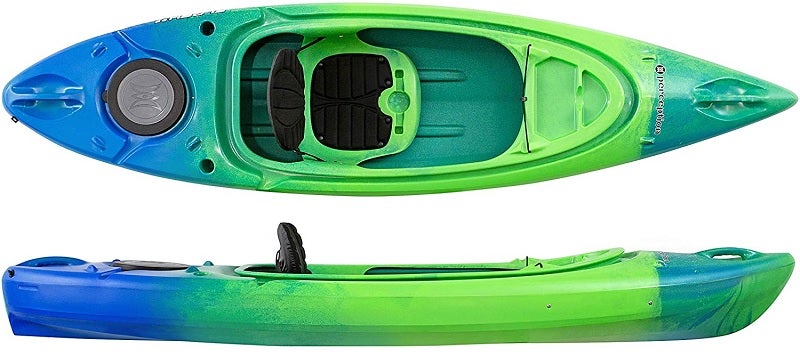
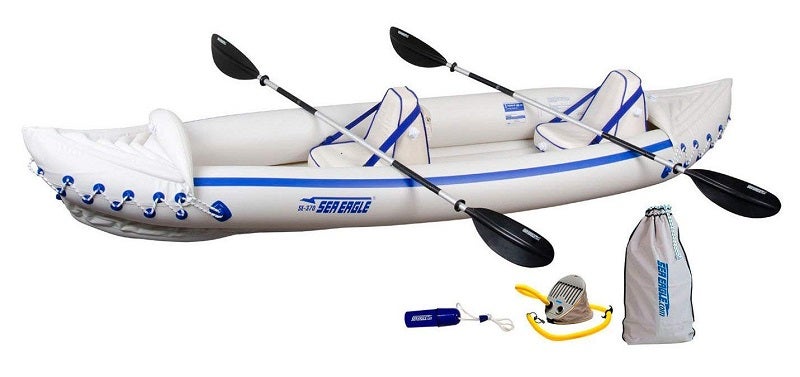
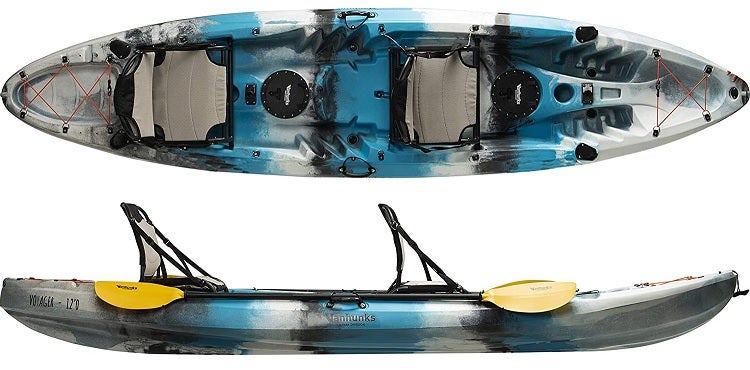
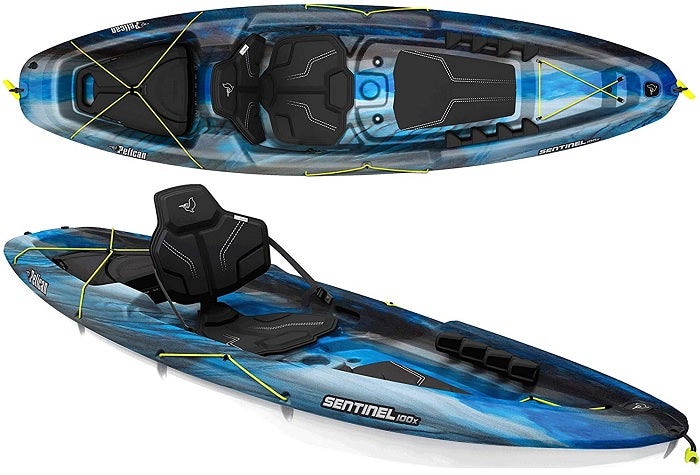
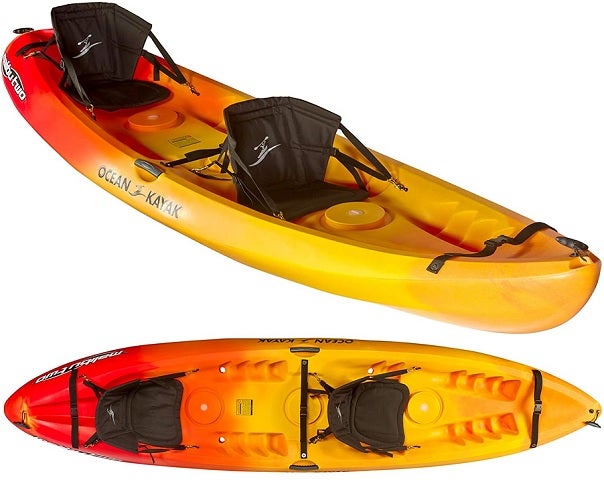
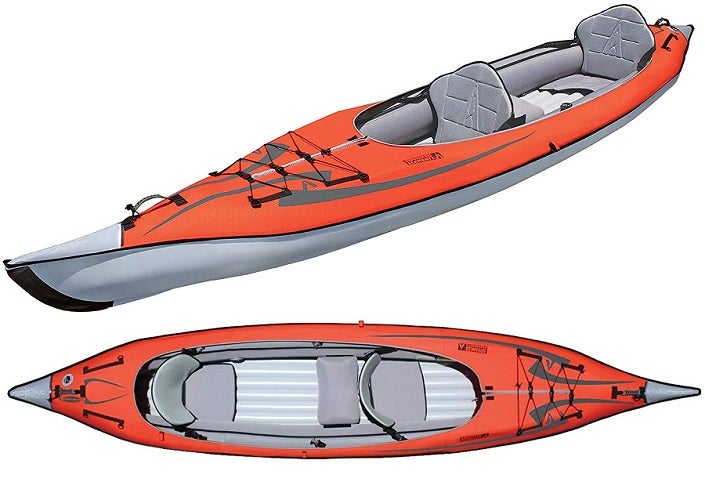
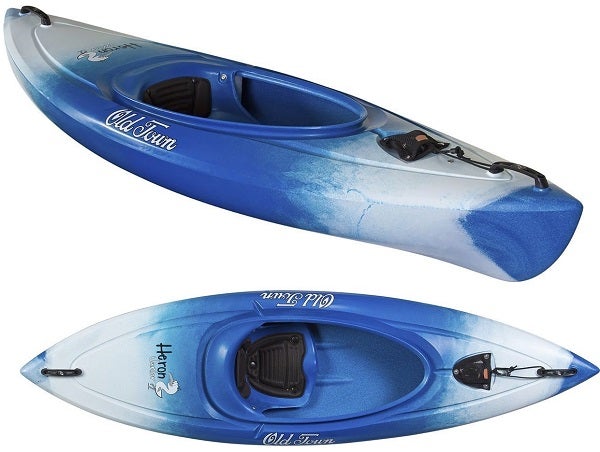
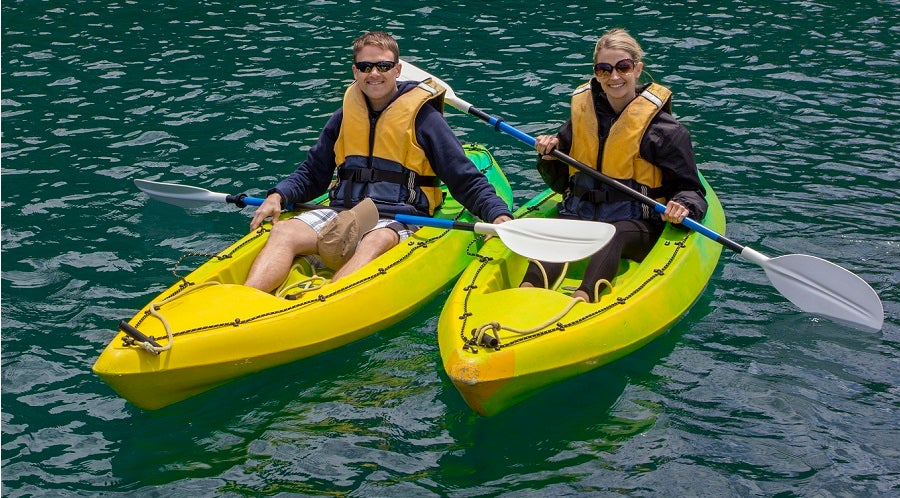
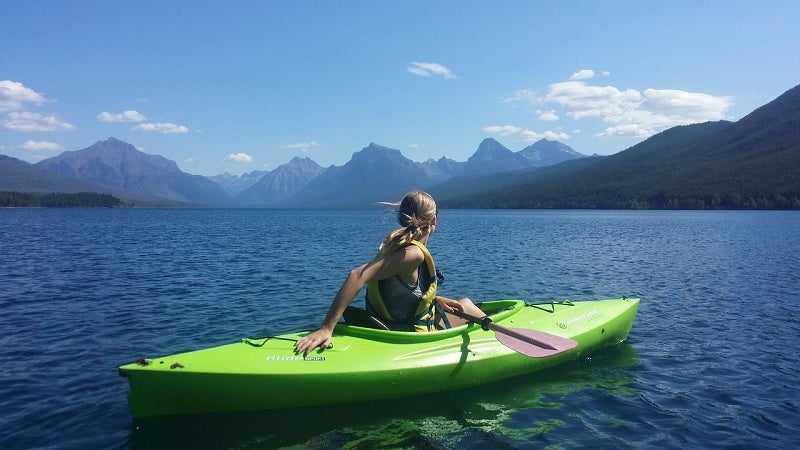
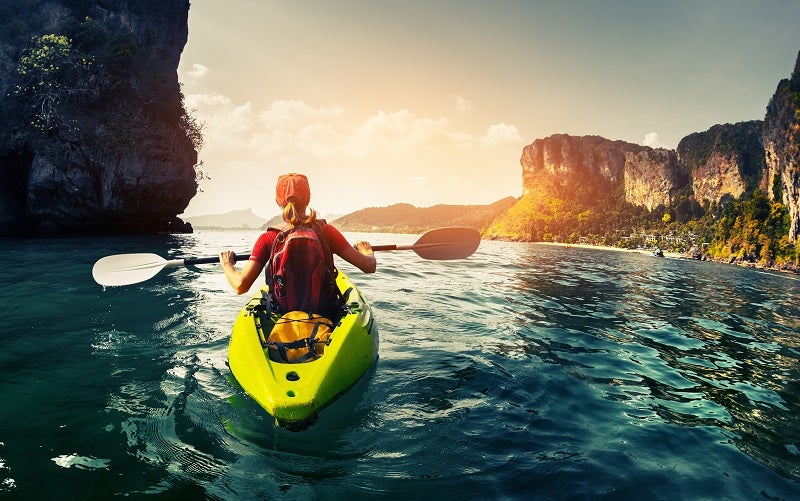
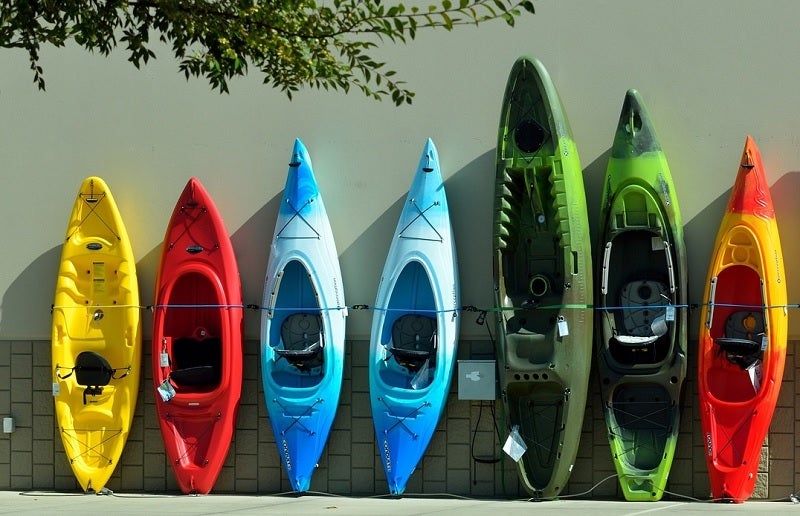
This was a very informative article. I am interested in finally buying a kayak. My sister got me into a few years ago. I have rented each time I go, so that limits how often I can go. It makes sense to just purchase one. I will most likely get a sit in kayak, instead of a sit on kayak. At 58, and weighing over 200 pounds, I think that is the best option for me. Thanks for the great article. It gave me a lot to consider.
Glad to help Maura